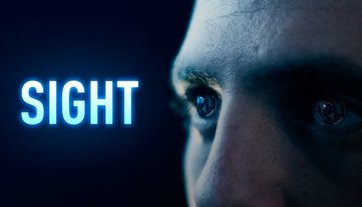Sight
- There are nerves that send signal to our eyes. Some nerves are involved in the sensation of light while others are involved in the movement of your eyeball left and right or up and down.
- The optic nerve or cranial nerve is a large nerve connected to the back of each eye that transmit light information gathered by the retina to the brain. After that, the brain can interpret these electric impulses into the image you see in front of you.
- The most important nerve involved in the movement of the eye is called the oculomotor nerve, also referred as cranial nerve lll. The ocumolomotor nerve controls the pupils and shape of the eye lens.
- Some of the functions of Cranial Nerve III are...
- Opens your upper eyelid so you can see something.
- Constricts your pupil when there is a lot of light hitting your eyes.
- Innervates and constricts the muscles that control the shape of your eye lens: this objects helps you see objects close to you.
- Moves your eyeballs in different directions, such as down to the ground, up toward the cieling or toward the nose.
- Cranial Nerve IV
- Cranial Nerve IV, inervates a single muscle to the eye that primarly helps you look down or toward the nose.
Precautions
Eat healthy for good visión; such as fatty acids, latein, zinc, and vitamin C and E might help Ward off age related visión problems.
- Green leafy vegetables
- Egg, nuts, beans, and other non-meat protein sources.
- Oranges and other citrus fruits or juices.
- Do not smoke
- Smoking gets you more likely to get you optic nerve damage.
- Look away from the computer screen. Looking at a computer screen for too long can cause:
- Eyestrain
- Blurry visión
- Trouble focusing at a distance
- Dry eyes
- Position your computer so that your eyes are level with the top of the monitor. This allows you to look slightly down at the screen.
- Try to avoid glare on your computer from Windows and lights. Use an anti-glare screen if needed.
- If oyur eyes are dry, blink more.
- Every 20 minutes rest your eyes by looking 20 feet away for 20 seconds at leats every hours get up and take a 15 minute break.
- Visit your eye docotr regularly, it helps you protect your sight and see your best. Depending on health needs, you can see either an optomestist or a ophthalmologist for an eye exam.
Eye Doctors
- Ophthalmologist: They provide general eye care, treat eye disease and perform eye surgery.
Optometists: Have years of specialized training after college. They provide general eye care and treat the most commons disease. They do not do eye surgery.

